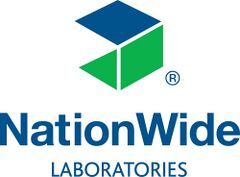Difference between revisions of "Chlamydia psittaci and Chlamydia felis"
Fiorecastro (talk | contribs) (Created page with "right|link=https://www.nwlabs.co.uk/|alt=NationWide Logo|240x240px|frameless == Diagnostic tests == Confirmation of Chlamydia psittaci formerly...") |
|||
| (One intermediate revision by the same user not shown) | |||
| Line 65: | Line 65: | ||
== Authors & References == | == Authors & References == | ||
[[NationWide Laboratories]] | [[NationWide Laboratories]] | ||
| + | [[Category:LabFacts Book NWL|ABCDEFGHIJKLMNO]] | ||
Latest revision as of 15:56, 29 April 2022
Diagnostic tests
Confirmation of Chlamydia psittaci formerly known as Chlamydophila psittaci infection relies upon the detection of genus specific lipopolysaccharide antigen via ELISA or species specific Chlamydophila psittaci DNA by PCR which is more sensitive. Chlamydia felis can also be detected using ELISA, or species specific PCR,
Zoonotic hazards
To minimise the zoonotic hazards for Chlamydia psittaci, carcasses of potentially infected birds should be placed in a polythene bag and sealed in an impervious outer container with sufficient absorbent material to absorb any leakage prior to incineration.
Owners of cats in which chlamydial infection has been diagnosed should be advised to maintain hygienic precautions when handling the cat or the litter tray.
Antigen test
| Samples | Conjunctival swab (cats), post mortem tissues (avian)
Use dry cotton swabs on plastic, wire or paper sticks. Transport medium is not required |
| Techniques | Conjunctival swabs (feline): reflect the eyelid and roll the swab across the conjunctiva to harvest cells
Post mortem tissues (avian): sear the tissue surface and stab insert the swab, rotating to harvest cells. Suitable tissues are liver, spleen and lungs |
| Comments | Faeces or faecal swabs are not suitable for the ELISA test due to the possibility of false positive results |
PCR test
| Smples | Conjunctival swab (cats), faeces (birds only), tissue, blood.
Use dry cotton swabs on plastic, wire or paper sticks. Faeces and tissues should be submitted fresh, unfixed in a sterile container. Blood samples should be submitted in EDTA. Transport media is not required and may interfere with the assay |
||
| Techiniques | Conjunctival swabs (cats and symptomatic birds): reflect the eyelid and roll the swab across the conjunctiva to harvest cells.
Faeces (avian): with an asymptomatic carrier bird, collect faeces on days 1, 3, 10 and 12 and pool in a sterile container without fixative. 0.5g is the optimum amount (about 1/4 tsp) but smaller volumes may be adequate. A single sample from a diarrhoeic bird may be sufficient. Post mortem tissues (avian): sear the tissue surface and stab insert the swab, rotating to harvest cells. Suitable tissues are liver, spleen and lungs. |
||
| Comments | Faecal samples are the preferred samples in avian species. A virulent infection may kill the bird before colonisation of the intestines occurs therefore ocular or tracheal swabs should also be submitted from symptomatic birds. In cats ocular infections may not lead to colonisation of the intestines, therefore ocular swabs should be submitted from symptomatic cases. |
Screening results for Chlamydia psittaci
Positive faeces. Bird is shedding chlamydia, may be clinically ill or an asymptomatic carrier and poses a zoonotic health risk to in contact humans.
Negative faeces. No support for current shedding, however, this does not prove that the bird is free from Chlamydia. If there is clinical suspicion of infection, further samples should be obtained and tested at regular intervals
Please visit www.nwlabs.co.uk or see our current price list for more information
